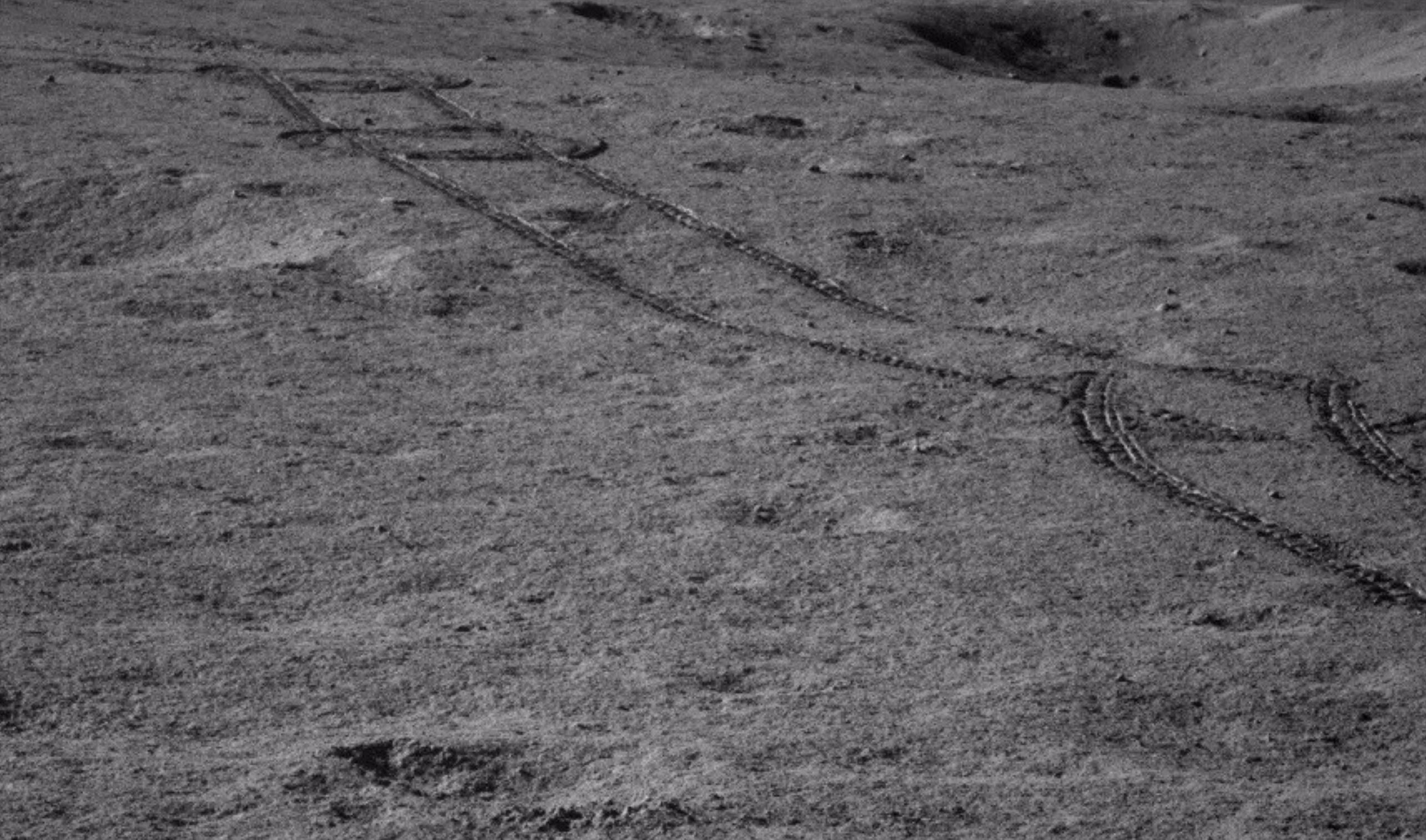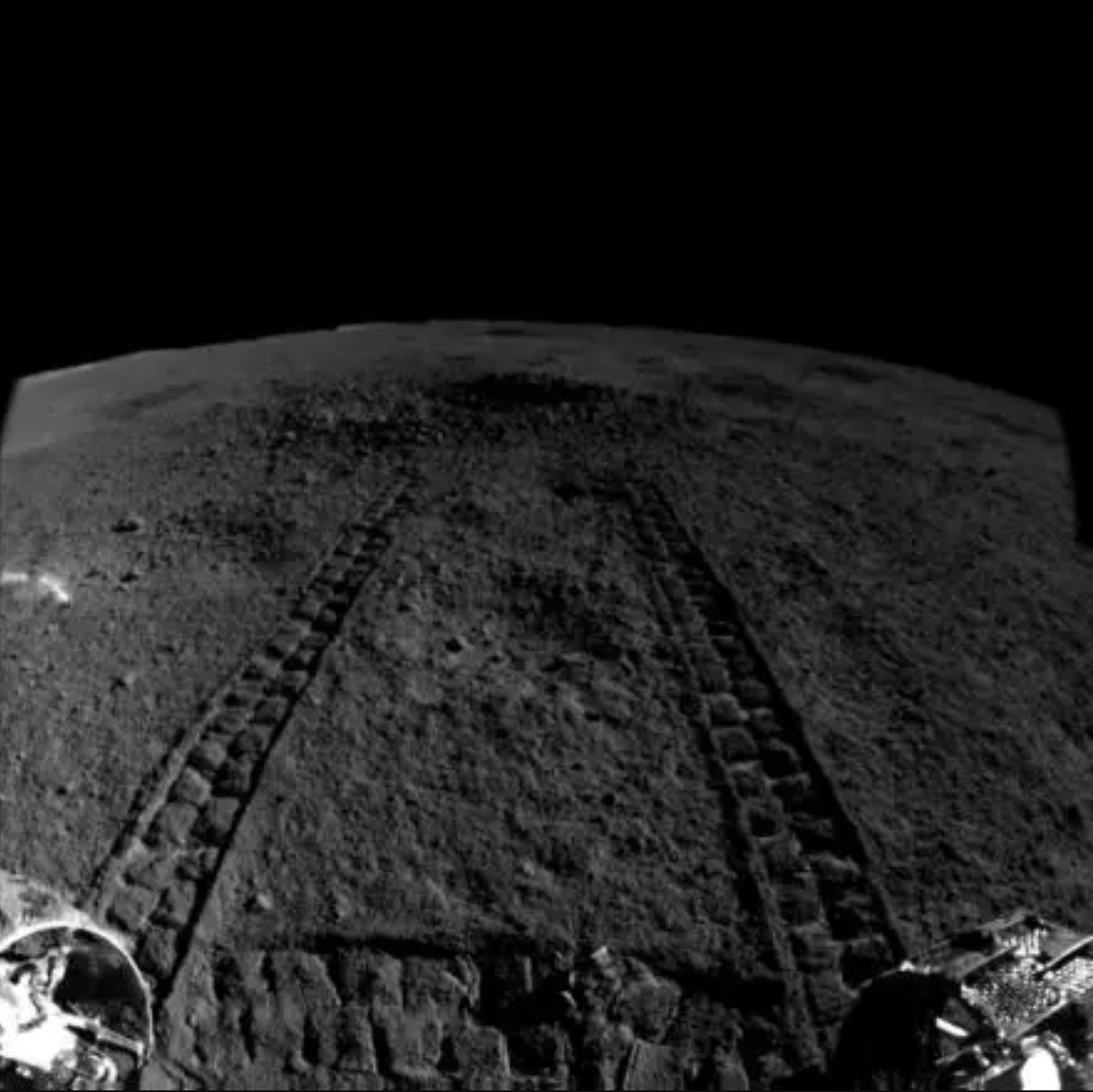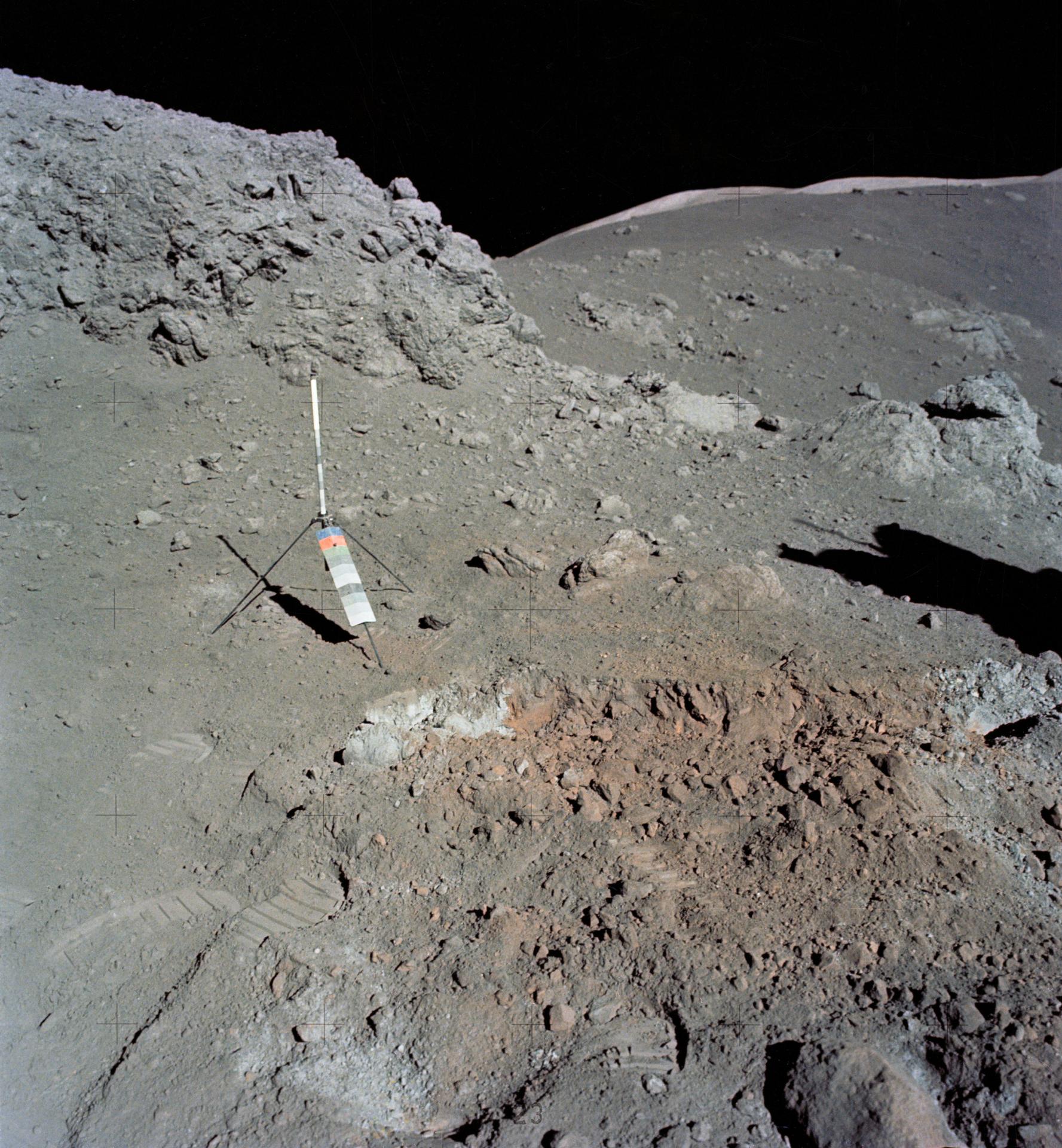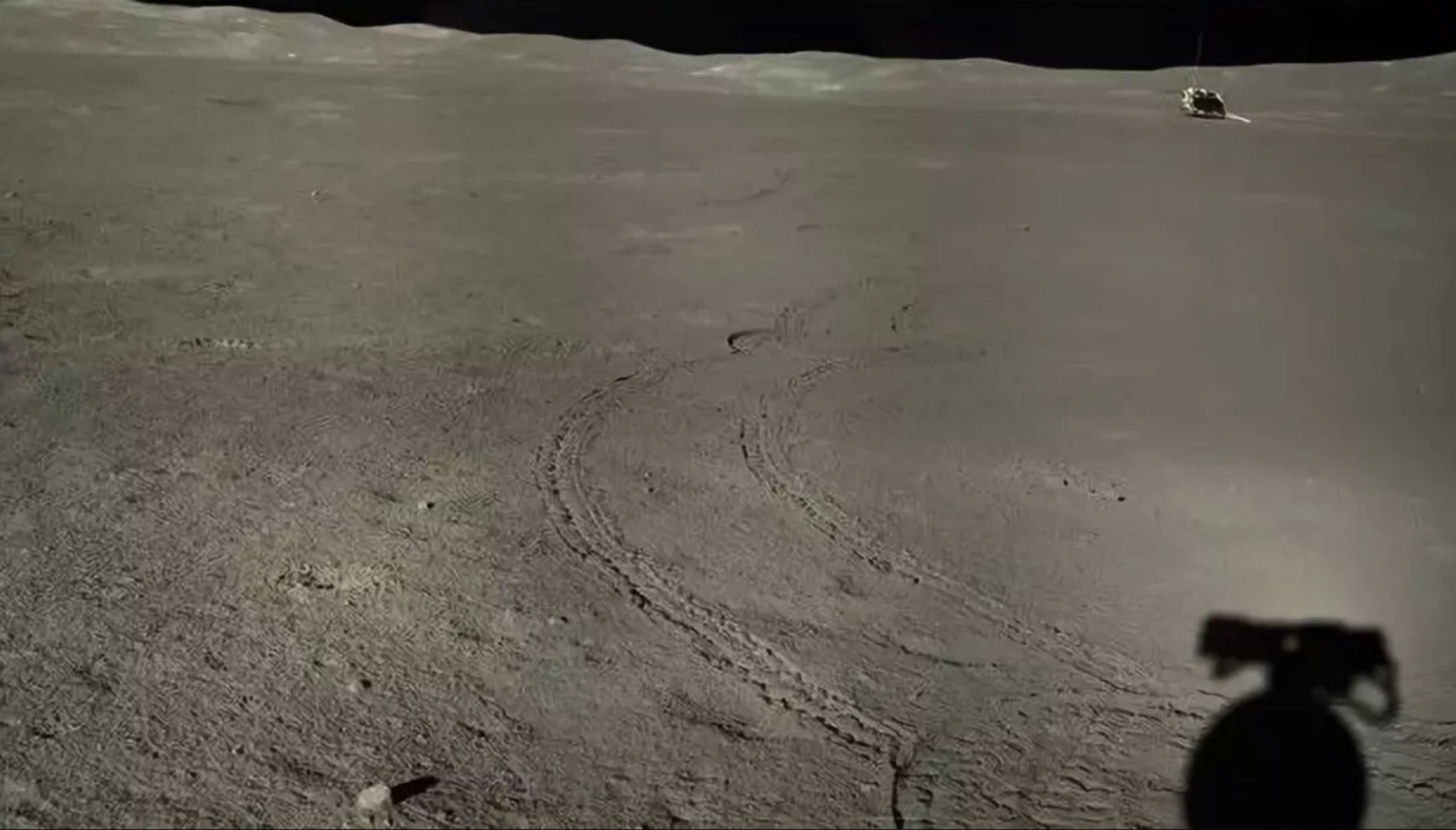China's Lunar Rover Has Found Something Weird on the Far Side of the Moon

China's Chang'e-4 lunar rover has discovered an unusually colored, 'gel-like' substance during its exploration activities on the far side of the moon.
The mission's rover, Yutu-2, stumbled on that surprise during lunar day 8. The discovery prompted scientists on the mission to postpone other driving plans for the rover, and instead focus its instruments on trying to figure out what the strange material is.
Day 8 started on July 25; Yutu-2 began navigating a path through an area littered with various small impact craters, with the help and planning of drivers at the Beijing Aerospace Control Center, according to a Yutu-2 'drive diary' published on Aug. 17 by the government-sanctioned Chinese-language publication Our Space, which focuses on space and science communication.
Related: Chang'e 4 in Pictures: China's Mission to the Moon's Far Side
On July 28, the Chang'e-4 team was preparing to power Yutu-2 down for its usual midday 'nap' to protect the rover from high temperatures and radiation from the sun high in the sky. A team member checking images from the rover's main camera spotted a small crater that seemed to contain material with a color and luster unlike that of the surrounding lunar surface.
The drive team, excited by the discovery, called in their lunar scientists. Together, the teams decided to postpone Yutu-2's plans to continue west and instead ordered the rover to check out the strange material.
With the help of obstacle-avoidance cameras, Yutu-2 carefully approached the crater and then targeted the unusually colored material and its surroundings. The rover examined both areas with its Visible and Near-Infrared Spectrometer (VNIS), which detects light that is scattered or reflected off materials to reveal their makeup.
Breaking space news, the latest updates on rocket launches, skywatching events and more!
VNIS is the same instrument that detected tantalizing evidence of material originating from the lunar mantle in the regolith of Von Kármán crater, a discovery Chinese scientists announced in May.
So far, mission scientists haven't offered any indication as to the nature of the colored substance and have said only that it is "gel-like" and has an "unusual color." One possible explanation, outside researchers suggested, is that the substance is melt glass created from meteorites striking the surface of the moon.
Yutu-2's discovery isn't scientists' first lunar surprise, however. Apollo 17 astronaut and geologist Harrison Schmitt discovered orange-colored soil near the mission's Taurus-Littrow landing site in 1972, prompting excitement from both Schmitt and his moonwalk colleague, Gene Cernan. Lunar geologists eventually concluded that the orange soil was created during an explosive volcanic eruption 3.64 billion years ago.
Chang'e-4 launched in early December 2018, and made the first-ever soft landing on the far side of the moon on Jan. 3. The Yutu-2 rover had covered a total of 890 feet (271 meters) by the end of lunar day 8.
Watch: China's Historic Moon Landing Captured by Probe's Camera
The Chang'e-4 lander and Yutu-2 rover powered down for the end of lunar day 8 on Aug. 7, and began their ninth lunar day over the weekend. The Yutu-2 rover woke up at 8:42 p.m. EDT on Aug. 23 (00:42 GMT Aug. 24), and the lander followed the next day, at 8:10 p.m. (00:10 GMT).
During lunar day 9, Yutu-2 will continue its journey west, take a precautionary six-day nap around local noontime, and power down for a ninth lunar night around Sept. 5, about 24 hours hours ahead of local sunset.
- Photos from the Moon's Far Side! China's Chang'e 4 Lunar Landing in Pictures
- NASA Probe Spots China's Chang'e 4 Lander on Far Side of the Moon (Photo)
- China's Chang'e 4 Returns First Images from Moon's Farside Following Historic Landing
Follow Andrew Jones at @AJ_FI. Follow us on Twitter @Spacedotcom and on Facebook.

Andrew is a freelance space journalist with a focus on reporting on China's rapidly growing space sector. He began writing for Space.com in 2019 and writes for SpaceNews, IEEE Spectrum, National Geographic, Sky & Telescope, New Scientist and others. Andrew first caught the space bug when, as a youngster, he saw Voyager images of other worlds in our solar system for the first time. Away from space, Andrew enjoys trail running in the forests of Finland. You can follow him on Twitter @AJ_FI.




